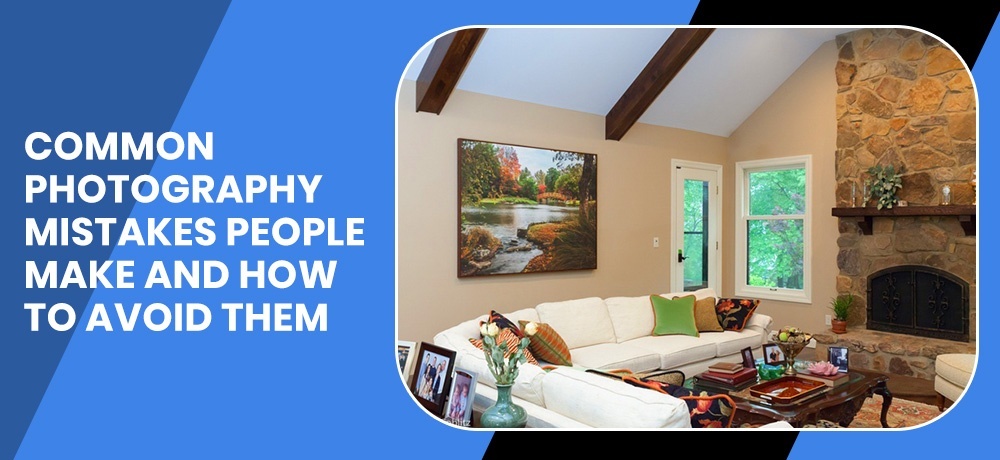Common Photography Mistakes People Make And How To Avoid Them

Do you love working behind the lens and capturing moments? If you’re passionate about photography and keen on making it a long-term career, then you need to excel at the basics, continue to learn and develop your skills.
While regular practice will help sharpen your skills, more often than not, as a newbie, you may be unaware of the finer aspects of photography and be prone to common errors. Unfortunately, these avoidable mistakes will affect the quality of the final image and may even cost you from capturing a remarkable moment. To steer clear of any negative outcome, Coblitz Photographic Arts has made a list of the most common mistakes people make when photographing and how to avoid them.
1. Not paying attention to the background
Most non-professional photographers concentrate on the subject of their photographs and may not pay attention to the background. On the other hand, most professionals first look for an appropriate background to decide where to place their subjects and themselves.
2. Not looking for the best lighting
One of the most critical elements in photography is lighting. It’s a vast subject that I can touch on here. Some things to consider: quality of light, the direction of light, and also the mood that lighting can help create. Quality of light relates to the color and size of the light source or sources. For a darker mood, pick bluer colors (e.g., skylight vs. direct sunlight). For a brighter mood, choose a warmer colored light source (e.g., tungsten lights). A larger light source makes softer highlights and shadows, which are usually better depending on your goal for the image. In photography, larger means covering a larger angle from the subject. A 2 ft. light 2 ft. away from the subject is “larger” than a 1 million miles wide light 93 million miles from the subject (e.g., the sun). Thus sunlight has very sharp shadows and highlights. You need to experiment by moving around the subject to see how the placement of the light source, camera, and subject affects the nature of the image. For example, backlit vs. front-lit vs. side-lit will have a very different effect on the mood of the image.
3. Not getting the color balance correct
Your eyes have a complicated function called color constancy that enables you to see white objects as white under a wide range of color sources or conditions. However, the camera doesn’t have this capability, so you have to compensate for it by telling the camera what type of light source is illuminating the photo before you take it or correcting it in post-processing after you take it. You can more easily do the latter if you take at least one image in a series with the same light source that includes a known white or grey object in the scene. You can tell the camera the color of the light source before you shoot by setting the “color balance” to one of a number of available settings, including daylight (yellower), cloudy (bluer), fluorescent, tungsten, etc. This helps the camera make the whites white and the other colors more natural.
4. Getting the exposure wrong
You can set the camera to “automatic” or “program” mode and hope it will give you the correct exposure, but it won’t always be right. The camera can be fooled by bright backgrounds or snow scenes etc. into setting the wrong exposure. For all scenes, the camera will try to make the average value in the scene grey (as opposed to white or black). For many scenes, this is correct, but if it’s a snow scene, the last thing you want is the snow to look grey. To avoid this, you’ll have to add 1-2 stops of exposure to the value the camera guesses. For backlit scenes, the camera may expose more for the background than the subject; thus, your subject will appear too dark. To compensate for that, you can either use spot metering instead of metering the whole scene or add 1-2 stops of exposure to the automatic setting.
5. Getting a camera with too many pixels
The camera industry tries to give you a simple measure of camera quality in terms of the number of megapixels it takes in each photo. However, unless you plan to enlarge the photos quite a bit (e.g., 30x40 vs. 8x10 prints), you may be better off with less noise than more pixels. Fewer pixels for the same sized sensor mean less noise. If you shoot in low light, this will be important to you.
To avoid these and other mistakes related to photography, reach out to David Coblitz at Coblitz Photographic Arts. As a leading photographer in St. Louis, MO, I can provide you with excellent photography services, including commercial photography, architectural and interior photography, portrait photography, and stress relieving art photography, amongst others. While I specialize in commercial and fine arts photography, I can ever offer innovative solutions to all your photography problems. My experience and expertise allow me to combine photography with art to give you exceptional results.
To learn more about the services I offer, please click here. To read what my clients are saying about me, please click here. If you have any questions about how I can help you, get in touch with me by clicking here.